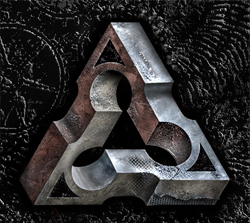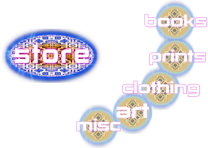Critiques are a long-standing tradition among artists, especially in academic settings. Outside the classroom it's sometimes hard to get an honest critique aimed at helping rather than tearing down. It's always exciting to see tattoo studios that have critique nights and that kind of thing, since face-to-face critiques between peers tend to have the right balance of honesty, respect and insight. This isn't always the case at tattoo forums or other online settings, where people let anonymity be an excuse to say extremely unhelpful things. A good critique should identify things that are being done right, which could be done more, and things that are being done wrong, alongside ways to make these things right.
This month I'm looking at the work of Madison Casey, who has clean and solid technical skills but is looking for ways to give his work more life and dimension. As with some of my other critiques, I'm using Photoshop to show a couple of his tattoos slightly altered in ways that I think make for a better tattoo. This time though I'm also suggesting an assignment to strengthen overall artistic skills in ways that will make for better tattooing.
.jpg)
The first piece we're looking at is a pair of ballet slippers, done all in light pinks and reds to create a soft look. It would be nice to see a healed photo of the tattoo to get an idea of how sheer and flesh toned it really is- my guess is that after some settling this will be a very light tattoo which might not have enough strength. Even a soft tattoo needs some foundation, so let's look at ways to strengthen this tattoo without losing all of the softness.
First and foremost comes the dropshadow, which lifts the shoes off the skin and gives us a chance to get a couple wedges of much-needed black in between the shoes and laces. Counterintuitively, the use of black or dark colors can make the light colors appear even lighter and softer- note how the top edge of the upper shoe lifts out from the shadowed background- and can make the tattoo look less dense, provided it is used selectively as it has been here. Bits of black have been brushed selectively over the outlines in places where more strength was needed, but in places where we could get away with it, color lines were left in color, mainly on the top edges of smaller shapes.
A bit more color range was brought into play as well. We added some cooler pinkish lavender to the undersides of the shoes and a bit in the shadow areas of the laces. These cooler tones give the pinks a greater sense of roundness and fullness, and will flatten out less with time. So by using a little more color range, a selective placement of medium dark tones in the background and some careful blackening of some choice lines, the overall look of the piece is strengthened substantially without losing its soft overall look.
.jpg)
The second tattoo we're looking at is a cluster of vegetables on an arm. It looks like he was aiming to get a mix of classic and modern looks, with some strong outlines and some more painterly rendering in the stems and other places. It's a healed photo, and you can see there's a bit of blowout/dropout in the linework, which needs to be carefully fixed at low power. but strong lines alone aren't adequate to separate a bunch of light colored shapes that are all so similar in value; the effect we get is what I refer to as neg-on-neg, or negative on negative. I usually try to put shapes next to each other that are different in value, so you get a clear alternation of dark and light through the piece. Outlines are great for giving a piece clarity but the use of color and shading are just as important in determining the tattoo's structure.
You can see in the Photoshopped version of the tattoo, I started by cleaning up and strengthening some of those lines to give it a cleaner look. I've also gone into the detailed areas of the stems using a liner and a mix of black and color to give the detail more strength and clarity without losing its painterly fine rendering. As for the highlights, they've been supported with slightly darker color around them, medium greens and tans, to give the highlights sharp edges and provide more visual presence for them. In theory, highlights could be done this way without using white pigment at all, but the white gives them that extra two percent.
As with the ballet slippers, we've also given this piece some strong dropshadows to lift up the foreground and provide some stronger overall contrast. Then the vegetables themselves were shaded, using a large brush to create smooth gradients so that the forms can have a nice rhythm of dark and light. This is handled carefully using medium tones so that the vegetables don't get too dark and stop looking like lemons and peppers.
.jpg)
I've also included a photo of some actual produce on a plate. Note first how the dropshadow lifts them off the picture plane and makes them pop forward. You can also see the gradients of medium colors where the peppers drop behind the oranges, causing the top edge of the oranges to leap out from the peppers. When in doubt, take a photo, and if the photo you get isn't dynamic enough, try different lighting. definitely try it without the flash. You'd be surprised at what a simple reference can teach you, and how much of this can be translated into improving your tattooing. If you really want to drive these lessons home, do a rendering in paint or colored pencil that fine-tunes your use of gradients and contrast to get the most clarity.























